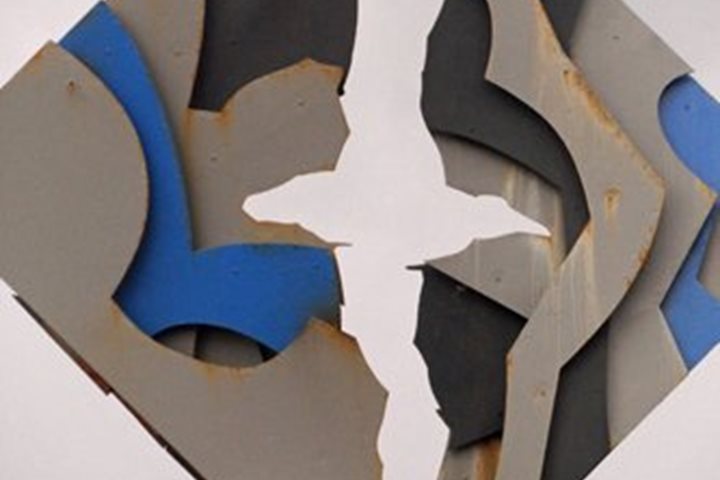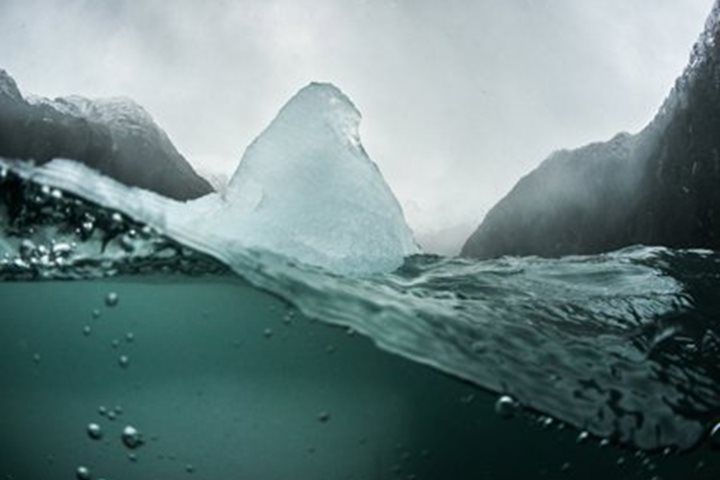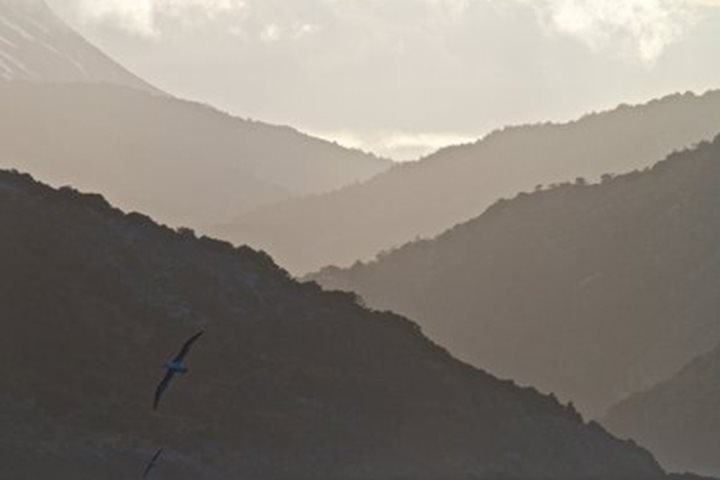We entered the sheltered southern bay of Peninsula Valdez at 0500, coinciding with a timely wake-up call from Bud, our expedition leader, which sent us tumbling from our bunks. 0500? Yes – we had a big day in every sense of the word, and needed to be on the dock by 0600 for a very special rendezvous.
In the clear cool of a Patagonian dawn, we climbed aboard buses and pulled away from the dock of Puerto Madryn, a town established over a century ago by a band of 150 determined Welsh settlers. These brave souls left the lushness of their Welsh valleys to fight drought, desert and deprivation. Yet by befriending the local Tehuelche Indians, and learning to irrigate the parched landscape, they found peace and prosperity and a new home, where to this day, they still speak their traditional language and pray unhindered by the old English oppression. It is just one of the many remarkable things about this strange land. As we left the township we passed the huge aluminum smelter Aluar, which provides 95% of the country’s aluminum needs. Then a fish processing plant that benefits from the rich seas offshore, teeming with shrimp and hake.
But within minutes we were out into an arid landscape that Darwin would have recognized, unchanged since the Beagle first sailed these waters over 180 years ago. Pale, thorny scrubs less than the height of a man clad a barren, dusty land, gasping under less than 10 inches of rain a year. But life, as Darwin so eloquently discovered, finds a niche in even the most inhospitable of conditions. Red-backed hawks had made nests on the electricity pylons; we could see the downy heads of their chicks peering out from the stack of tangled twigs that forms their eyrie. Then a movement among the scrubby bushes: three running birds like plump pheasants: the elegant-crested tinamou which thrives on seeds and insects here.
Were those hares on one grassy knoll? No – the remarkable mara or Patagonian cavy, a distant relative of the guinea pig: as large as a dog, with spindly legs, a squirrel face and giant rabbit ears, they look as though designed by a committee from spare animal parts. Then the bus halted in a cloud of dust. “Guanacos!” came the cry: out among the shrubs now greening in the spring warmth were long-necked fawn and ginger animals related to the llama of the Andes. They are emblematic of the Patagonian steppe, gazing back at us from their thorny fastness.
But we were not to be delayed and by 0800 were descending into the tiny coastal town of Puerto Pyramides, donning lifejackets before boarding a bright orange rigid-hull inflatable. Pushed into the shallow waters of the bay by a powerful tractor, the outboard engines fired up and we were now transmuted from desert nomads to excited mariners. We are going whale-watching! The expert helmsman and guide led us quickly to glistening shapes offshore, then slowed down until we were alongside - the mighty southern right whale; a huge female and her tiny calf, piggy-backing and snuggling up to its mum. In the distance, a whale was leaping, making mighty splashes, and we came close to one raising its tail vertically out of the water. But the supreme moment was one curious female which came right up to our boat and almost rested her chin on the pontoon to our utter amazement. I could have shaved the bristles off her chin…. but then facial perfection has never been an obsession of these leviathans. At 50’ long and up to 90 tons they have never bothered about waist measurements either! They fatten up off Antarctica before swimming north to give birth in these shallow, sheltered bays. We returned to shore still reeling from these close encounters with such gentle giants.
Our afternoon was completed with a visit to a coastal colony of Magellanic penguins, a delicious asado of roasted lamb and empanadas at the San Lorenzo estancia and nearby views of rheas and maras in the sheep pens outside. It was a happy band of exhausted adventurers who finally drove the dusty highway back to National Geographic Explorer waiting for us at the Puerto Madryn jetty.







